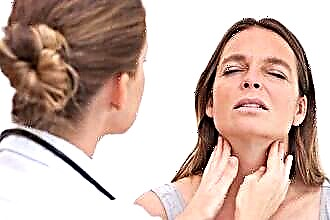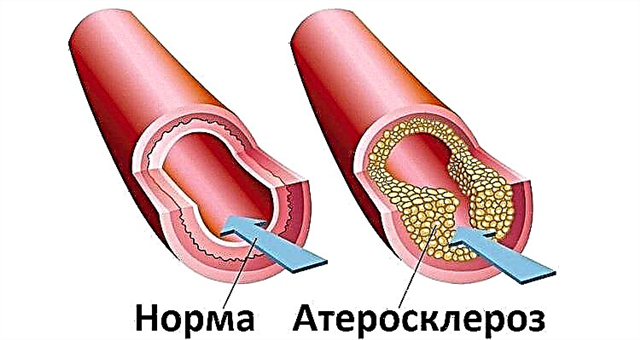Sinusitis in children is dangerous in its consequences, since the focus of inflammation is in the immediate vicinity of the cranial cavity. Incorrect treatment methods or untimely access to qualified medical care threaten complications in the form of periostitis, meningitis, sepsis or visual impairment. In order to avoid serious problems and prevent the disease from becoming chronic, it is necessary to start therapy at the early stages of the development of pathology. To do this, it is important to be able to distinguish the symptoms of sinusitis and select treatment in accordance with the nature of the disease.
Features of the development of the paranasal sinuses in children
To ensure normal air exchange in the human body, there are four pairs of paranasal sinuses (frontal, maxillary, wedge-shaped and ethmoid). All of them take part in cleaning, humidifying and warming the inhaled air. However, at birth, the child's frontal (frontal) sinuses are absent altogether, and the maxillary (maxillary) sinuses are small slits. That is why, at an early age, children are very sensitive to air quality and easily pick up infections in adverse conditions. On the other hand, due to the tiny size of the maxillary and the absence of frontal sinuses, young children are not at risk of developing sinusitis and frontal sinusitis.
Only with age do the frontal sinuses form in children and the maxillary sinuses enlarge, turning into full-fledged cavities. Their final formation occurs at about 12-16 years old. Sinusitis, as a rule, can develop in children from about 5 years old, much less often from 3 years old, and frontal sinusitis - generally only from 7 years old.
In order to reduce the risk of pathology, you should be attentive to the air condition in the room where the child is. The air should be humid and fresh, and its temperature should not rise above 18-20 degrees.
Causes of sinusitis
The causes of sinusitis in children are different. The trigger for the development of this pathology can be:
- untreated or neglected cold;
- curvature of the nasal septum;
- inflammation of the upper teeth;
- the appearance of neoplasms in the nasal cavity;
- an allergic reaction of the body.
In the overwhelming majority of cases in children, sinusitis is preceded by ordinary rhinitis (runny nose). The virus that causes it enters the mucous membrane and begins to destroy the epithelium - the lining of the sinuses and nasal cavity. By causing tissue damage, it opens the way for bacterial infection to enter. In addition, given that the maxillary sinuses communicate with the nasal cavity through the anastomosis, various viruses and bacteria constantly enter them along with the air. However, their presence in the sinus does not mean that the child will definitely get sinusitis.
The sinuses have a special immune system to protect against infections, which works through the interaction of lymphocytes, pharyngeal tonsil, and sinus lining cells. This barrier protects the mucous membrane from bacterial inflammation. However, if the immune system is weakened or the fistula remains clogged due to prolonged and severe swelling of the mucous membrane as a result of rhinitis, then the chances of developing bacterial sinusitis increase dramatically. Thus, one reason for the occurrence of inflammation of the maxillary sinuses, as a rule, is not enough - several conditions must coincide. For example, infection in the sinuses and a decrease in the effectiveness of the immune barrier.
Types of sinusitis
Due to the fact that there are different reasons that cause sinusitis, experts distinguish several types of this disease. First, a distinction is made between viral and bacterial pathologies (often the second follows from the first as a result of improper treatment). Secondly, inflammation can occur both in one sinus (then we are talking about unilateral sinusitis), and in two at the same time (then it is bilateral sinusitis in a child). Thirdly, in accordance with the characteristics and speed of the course, the disease can be acute or chronic. Finally, according to the form of inflammation, such types of maxillary sinusitis are distinguished: catarrhal, purulent, allergic, odontogenic.
Symptoms of sinusitis
Viral sinusitis is usually accompanied by the same symptoms as rhinitis - nasal congestion and decreased olfactory function.
With proper treatment of the common cold and timely removal of the edema, viral sinusitis passes without causing any complications in the child. However, if we are talking about bacterial sinusitis, then a specific  treatment and preferably at the earliest possible stage. In order not to miss the moment of development of purulent sinusitis, you should consult a doctor if the following symptoms appear:
treatment and preferably at the earliest possible stage. In order not to miss the moment of development of purulent sinusitis, you should consult a doctor if the following symptoms appear:
- foul-smelling yellow or green discharge from the nose and throat;
- pain in the area of u200b u200bthe location of the maxillary sinuses;
- headache, feeling of pressure in the head;
- swelling of the cheek or brow;
- subfebrile temperature (37-38 degrees).
Diagnosis of sinusitis
It is possible to diagnose sinusitis in children based on the clinical picture of the disease and on the results of a general blood test, which should show the presence of an inflammatory process. In addition, Russian specialists often resort to radiography of the paranasal sinuses. Darkening in the area of the maxillary cavities in the picture indicates the presence of pathological exudate in the sinuses. However, the accumulation of mucus in the maxillary sinuses occurs with any acute respiratory viral infection, but does not necessarily lead to the development of sinusitis. A correct diagnosis can be made only with an integrated approach, which includes X-ray, blood test, examination at the ENT and identification of the main signs.
Often, when diagnosing sinusitis, computed tomography is used, especially if there is a suspicion that odontogenic problems have become the cause of the development of the disease. In addition, when determining (sometimes even in treating) sinusitis, doctors do a puncture of the maxillary sinus. However, this method is used only in the most extreme cases, when the prescribed treatment does not work. In such a situation, with the help of a puncture, specialists take the pathological exudate for analysis, inoculate it, grow bacteria and then select the necessary treatment. Making a puncture for therapeutic purposes, especially for children, is highly discouraged, despite the fact that this practice is widespread in domestic medicine.
Medication for sinusitis
Timely diagnosis plays an important role in the fight against any type of sinusitis. At first, active treatment of the disease allows you to avoid unpleasant consequences. What will happen if sinusitis is not treated has already been said above - the child will face serious complications and the acquisition of a chronic disease. In any case, if you find symptoms of maxillary sinusitis, you should see your doctor. In order to prescribe an effective treatment, it is necessary to accurately determine the form of pathology and the reasons that caused the inflammation, since this is of fundamental importance when prescribing therapy.
If we are talking about catarrhal sinusitis, then it develops, as a rule, against the background of ARVI. Getting into the sinus through the anastomosis together with air currents or with improper blowing of the nose (drawing in mucus inside), the virus begins to provoke active mucus production there.In this case, the normal outflow of mucous secretions is hampered due to edema of the mucous membrane that clogs the anastomosis. Thus, in the absence of the classic signs of bacterial sinusitis, no specific therapy is required. Hyperemia, edema and mucous exudate will disappear along with the cure of the acute respiratory viral infection.
If the treatment of an acute respiratory viral infection is ineffective (for example, treatment with antibiotics, which are powerless in the fight against viruses) or does not take place at all, then the prolonged absence of normal air exchange in the sinus leads to the fact that favorable conditions for the appearance and reproduction of pathogenic organisms develop there. In addition, the infection can enter the maxillary cavity along with the blood stream. In such a situation, the mucous discharge gradually turns into purulent and the child begins to show symptoms of bacterial sinusitis.
In this case, the treatment cannot do without antibiotic therapy, since this is the only effective and reliable treatment. Good results are obtained by the systemic use of new generation drugs (augmentin, azithromycin, cephalosporins). Also, local antibiotics (Baporox, Isofra) are often used, which allow the active substance to be concentrated directly at the site of inflammation. Thus, injectable therapy has lost its relevance and is practically no longer used. The course of antibiotic therapy usually lasts from 10 to 14 days and should not be interrupted after the first improvements in the child's condition, otherwise there is a risk of recurrence of the disease. In addition to antibiotics, doctors usually prescribe vasoconstrictor drops that help relieve swelling.
Despite the fact that the development of sinusitis with ARVI is the most common case, sometimes, after the loss of milk teeth, inflammation of the maxillary sinuses is provoked by dental problems (incorrect tooth position or small caries of the upper teeth). In such a situation, in addition to being examined by an ENT, you will need consultation and appropriate treatment at the dentist. Only after elimination  odontogenic causes, you can completely cope with maxillary sinusitis. By the way, in order to protect a child from "dental" sinusitis, one should teach him to monitor oral hygiene from childhood.
odontogenic causes, you can completely cope with maxillary sinusitis. By the way, in order to protect a child from "dental" sinusitis, one should teach him to monitor oral hygiene from childhood.
With allergic sinusitis, specialists, as a rule, prescribe antihistamines to the patient. It is also important to prevent the child from coming into contact with the allergen causing the reaction, if possible. If the inflammation occurs due to the curvature of the nasal septum, trauma or the appearance of neoplasms (polyps, cysts) in the nasal cavity, then, most likely, the problem will have to be solved with the help of surgery. As for the alignment of the nasal septum, it is not recommended to carry out operations before the age of 16.
Washing according to the Proetz method
If parents seek medical help at the first stages of the development of pathology, doctors can prescribe a child washing according to the Proetz method, which is popularly called the "cuckoo". The purpose of this procedure is to clear the sinuses of pathogenic exudate. The manipulation is carried out on an outpatient basis: the child lies down, throwing his head back at an angle of 45 degrees, a catheter is inserted into one nostril, with the help of which an antiseptic solution is injected into the cavity, into the other - a suction through which mucopurulent masses come out. In this case, the child must repeat the "cuckoo" all the time in order to avoid getting secretions into the larynx.
However, children are often afraid of such a procedure, so this method of treatment is not always suitable for young patients. In addition, improper rinsing can have serious consequences. Considering that in children, the auditory organs are located quite close to the sinuses, the ingress of fluid there can provoke otitis media. There is also a risk of impaired olfactory function. Finally, only bilateral sinusitis in a child can become a reason for using the "cuckoo" as an element of complex therapy. If the infection is in only one sinus (unilateral sinusitis), flushing can help spread it to the sinus on the other side.



